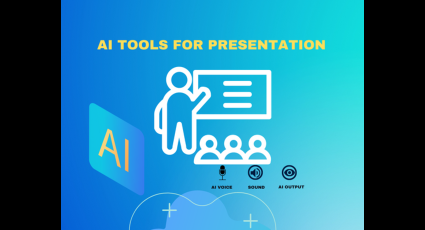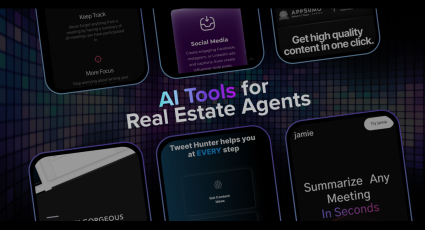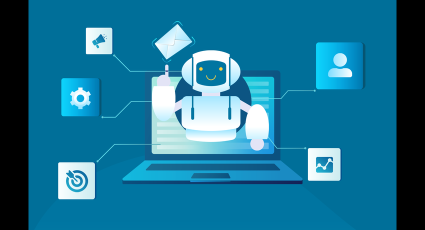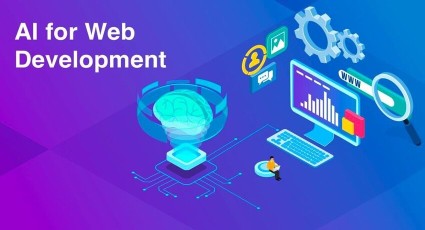Blog Details
How to Use AI for E-commerce

Introduction
The digital revolution has remade countless industries, and e-commerce is no exception. Today's e-commerce landscape is more competitive than ever, with businesses striving to offer superior customer experiences and operational efficiency. Artificial Intelligence (AI) is at the forefront of this transformation, providing powerful tools to optimize various aspects of the e-commerce business model. This blog post will delve into how AI tools for e-commerce can be leveraged to enhance e-commerce, focusing on its benefits, practical applications, challenges, and future trends.
Understanding AI in E-commerce
Artificial Intelligence refers to the simulation of human intelligence in machines that are programmed to think and learn like humans. In e-commerce, AI applications range from personalized shopping experiences to automated customer service, inventory management, and beyond. Understanding these applications is the first step toward leveraging AI in your e-commerce business.
Benefits of AI Integration in E-commerce
Enhancing Customer Experience
Personalized Product Recommendations
AI algorithms analyze customer data, including previous purchases and browsing behavior, to generate personalized product recommendations. This tailored approach can significantly increase conversion rates and average order value. Platforms like Amazon have mastered this technique, showing customers exactly what they are likely to buy next.
Intelligent Search and Navigation
AI-powered search engines use natural language processing (NLP) to understand and interpret customer queries more accurately. This improves search relevance and helps customers find products faster, enhancing their overall shopping experience. Technologies like Elasticsearch and Algolia are leading the way in intelligent search solutions.
Chatbots and Virtual Assistants
AI-driven chatbots and virtual assistants provide immediate responses to customer inquiries, reducing wait times and improving customer satisfaction. These tools can handle a wide range of tasks, from responding to FAQs to assisting in product selection and completing orders. Well-known examples include IBM Watson and Drift.
Dynamic Pricing and Offers
AI enables dynamic pricing strategies that adjust prices based on real-time supply and demand, competitor pricing, customer behavior, and other factors. This optimized pricing model maximizes revenue while staying competitive. Companies like Uber and Airbnb use dynamic pricing to great effect.
Optimizing Inventory Management
Demand Forecasting
AI models predict future demand for products based on historical data, seasonal trends, and market conditions. Accurate demand forecasting prevents stockouts and overstock situations, ensuring that inventory levels are optimized. Tools like SAS Forecasting for Inventory Planning are instrumental in this regard.
Automated Restocking
AI systems can automate the restocking process by monitoring inventory levels in real-time and triggering orders when stock falls below a certain threshold. This ensures that products are always available without manual intervention, as seen in solutions provided by Oracle Supply Chain Management.
Inventory Tracking and Management
Advanced AI algorithms enable precise inventory tracking, reducing errors and improving the accuracy of stock counts. This leads to better inventory control and fewer discrepancies. RFID technology and IoT sensors further aid in efficient inventory management.
Improving Marketing Strategies
Customer Segmentation and Targeting
AI analyzes customer data to segment users based on behavior, demographics, and preferences. This granular segmentation allows for highly targeted marketing campaigns, improving engagement and conversion rates. Platforms like Salesforce Marketing Cloud leverage AI for effective customer segmentation.
Predictive Analytics for Campaigns
Predictive analytics uses AI to forecast the success of marketing campaigns by analyzing past campaign data and current market trends. This helps marketers allocate resources more efficiently and optimize their strategies for better results. Google Analytics and HubSpot are leaders in predictive analytics for marketing.
Automated Content Creation
AI tools can generate high-quality content for marketing purposes, including product descriptions, blog posts, and social media updates. Automated content creation saves time and ensures consistency across all marketing channels. Jasper and Copy.ai are popular platforms for AI-generated content.
Streamlining Operations
Supply Chain Optimization
AI improves supply chain efficiency by optimizing routes, predicting potential disruptions, and managing logistics. This leads to reduced costs and faster delivery times. Companies like DHL and FedEx use AI to enhance their supply chain operations.
Automated Order Fulfillment
AI-driven robots and automation systems streamline the order fulfillment process, from picking and packing to shipping. This automation reduces human error and speeds up order processing. Amazon's use of Kiva robots in their warehouses is a prime example of this technology in action.
AI-powered Fraud Detection
AI algorithms detect fraudulent activities by analyzing patterns and anomalies in transaction data. This proactive approach to fraud detection minimizes financial losses and protects customer trust. PayPal and Stripe use AI to safeguard their payment systems.
Boosting Sales and Conversions
Personalized Upselling and Cross-selling
AI identifies opportunities for upselling and cross-selling by analyzing customer behavior and purchase history. This personalized approach increases the likelihood of additional sales. Shopify and BigCommerce offer AI-driven upselling and cross-selling features for e-commerce businesses.
Dynamic Pricing Strategies
AI enables dynamic pricing models that adjust prices in real-time based on demand, competition, and other market factors. This ensures competitive pricing while maximizing profit margins. Competera and Prisync are examples of AI-driven dynamic pricing solutions.
Enhancing Checkout Processes
AI streamlines the checkout process by auto-filling customer information, suggesting payment methods, and offering one-click purchases. A smoother checkout experience reduces cart abandonment and increases sales. Amazon's 1-Click Ordering is a well-known implementation of this concept.
Leveraging Data Analytics
Customer Behavior Analysis
AI analyzes customer behavior data to uncover insights into shopping patterns, preferences, and buying triggers. This information helps businesses tailor their strategies to meet customer needs more effectively. Tools like Google Analytics and Adobe Analytics offer robust AI-driven customer behavior analysis capabilities.
Sales Data Insights
AI provides actionable insights into sales data, identifying trends, peak seasons, and growth opportunities. This data-driven approach enables businesses to make informed decisions and drive sales growth. Tableau and Power BI are popular platforms for sales data analytics.
A/B Testing with AI
AI enhances A/B testing by quickly analyzing multiple variables and determining the most effective combinations. This accelerates the testing process and ensures more accurate results. Optimizely and VWO are examples of AI-powered A/B testing platforms.
Best AI Tools for E-Commerce
1. AdsCreative: AI-Driven Ad Optimization
What is AdsCreative?
AdsCreative is an AI-powered tool designed to optimize your online advertising campaigns. It leverages machine learning algorithms to create, test, and refine ad creatives, ensuring that your marketing efforts yield the highest possible return on investment (ROI).
Key Features
Automated Ad Creation: Generate multiple ad variants quickly and effortlessly.
A/B Testing: Run simultaneous tests on different ad creatives to determine which performs best.
Performance Analytics: Gain insights into how your ads are performing in real-time, allowing you to make data-driven adjustments.
How to Use AdsCreative
Input Your Goals: Start by specifying your advertising objectives, such as increasing sales or driving website traffic.
Upload Assets: Provide images, videos, and text that the AI can use to create ad variants.
Monitor & Optimize: Use the tool's analytics dashboard to monitor performance and make real-time adjustments.
By automating the creative process and continuously optimizing your ads, AdsCreative ensures that your marketing dollars are well spent.
2. GetManifest: Personalized Shopping Experiences
What is GetManifest?
GetManifest uses AI to deliver personalized shopping experiences to your customers, enhancing user engagement and increasing sales. The platform analyzes customer behavior to recommend products tailored to individual preferences.
Key Features
Behavioral Analysis: Track and analyze customer interactions to understand their preferences.
Product Recommendations: Offer personalized product suggestions in real-time.
Dynamic Pricing: Adjust prices based on customer behavior and market trends.
How to Use GetManifest
Integrate with Your Store: Connect GetManifest to your e-commerce platform using its API.
Configure Settings: Set up parameters for recommendations and dynamic pricing.
Analyze Data: Use the platform's analytics to gain insights into customer behavior and refine your strategy.
GetManifest ensures that each customer feels like the store was designed just for them, increasing the likelihood of repeat purchases.
3. Mokker: Visual Content Creation
What is Mokker?
Mokker is an AI tool that simplifies the process of creating high-quality visual content for your e-commerce store. Whether you need product images, banners, or social media visuals, Mokker can generate them quickly and efficiently.
Key Features
Image Generation: Create professional-grade product images without the need for a photoshoot.
Background Removal: Automatically remove backgrounds to make your products stand out.
Template Library: Access a wide range of design templates tailored for e-commerce.
How to Use Mokker
Upload Your Products: Provide images of your products.
Choose Templates: Select from a variety of pre-designed templates or create your own.
Customize & Download: Customize the visuals to match your brand's aesthetics and download them for use.
With Mokker, you can maintain a consistent and professional visual identity across all your marketing channels.
4. Rocketfy: Inventory Management & Demand Forecasting
What is Rocketfy?
Rocketfy is an AI-powered tool designed to streamline inventory management and demand forecasting for e-commerce businesses. It uses machine learning algorithms to predict future demand, helping you maintain optimal inventory levels.
Key Features
Demand Forecasting: Predict future product demand based on historical data and market trends.
Inventory Optimization: Ensure you have the right amount of stock at all times.
Automated Reordering: Automatically reorder inventory when levels fall below a specified threshold.
How to Use Rocketfy
Integrate with Your Inventory System: Connect Rocketfy to your existing inventory management system.
Set Parameters: Define your inventory thresholds and reordering rules.
Monitor & Adjust: Use the tool's dashboard to monitor stock levels and make adjustments as needed.
Rocketfy helps you avoid both overstocking and stockouts, ensuring that you can meet customer demand without tying up too much capital in inventory.
Case Studies and Success Stories
Leading Brands Using AI in E-commerce
Amazon: Amazon leverages AI across various aspects of its business, from personalized recommendations and dynamic pricing to warehouse automation and supply chain optimization.
Alibaba: Alibaba uses AI to personalize the shopping experience, optimize logistics, and enhance customer service through chatbots.
eBay: eBay employs AI for product recommendations, image search, and fraud detection, improving user experience and security.
Success Metrics and ROI
Amazon: AI-driven recommendations contribute to 35% of Amazon's total sales.
Alibaba: AI-powered logistics reduced delivery times by 30% and lowered operational costs.
eBay: AI-enhanced search functionality increased customer engagement and purchase rates.
Challenges and Considerations
Data Privacy and Security
AI systems rely on vast amounts of data, raising concerns about data privacy and security. Businesses must implement robust data protection measures and comply with regulations like GDPR and CCPA.
Integration with Existing Systems
Integrating AI solutions with existing e-commerce platforms can be complex and requires careful planning. Businesses must ensure compatibility and seamless integration to avoid disruptions.
Ethical Considerations in AI
AI systems can sometimes exhibit biases, leading to unfair treatment of certain customer segments. Businesses must adopt ethical AI practices and regularly audit their systems for biases.
Future Trends in AI and E-commerce
Emerging AI Technologies
Voice Commerce: Voice-activated AI assistants will play a significant role in simplifying the shopping experience, allowing customers to make purchases using voice commands.
Visual Search: AI-powered visual search will enable customers to find products by uploading images, revolutionizing the way they shop.
Predictions for the Future of E-commerce
Hyper-Personalization: AI will enable even more personalized shopping experiences, catering to individual preferences and needs.
AI-driven Marketplaces: AI will power new marketplaces that offer better product discovery, pricing, and customer service.
Conclusion
Recap of Key Points
AI is transforming the e-commerce landscape by enhancing customer experiences, optimizing operations, and driving sales growth. From personalized recommendations and dynamic pricing to automated order fulfillment and fraud detection, AI offers numerous benefits for e-commerce businesses.
Steps to Implement AI in Your E-commerce Business
Identify Business Needs: Determine which areas of your e-commerce business can benefit most from AI.
Choose the Right AI Tools: Research and select AI solutions that align with your business goals and requirements.
Plan for Integration: Develop a detailed plan for integrating AI into your existing systems and processes.
Train Your Team: Ensure your team is well-trained and comfortable using AI tools.
Monitor and Optimize: Continuously monitor AI performance and make adjustments to optimize results.
AI is not just a buzzword; it’s a powerful tool that can propel your e-commerce business to new heights. By understanding its applications and benefits, you can harness its potential to stay ahead of the competition and deliver exceptional value to your customers.









